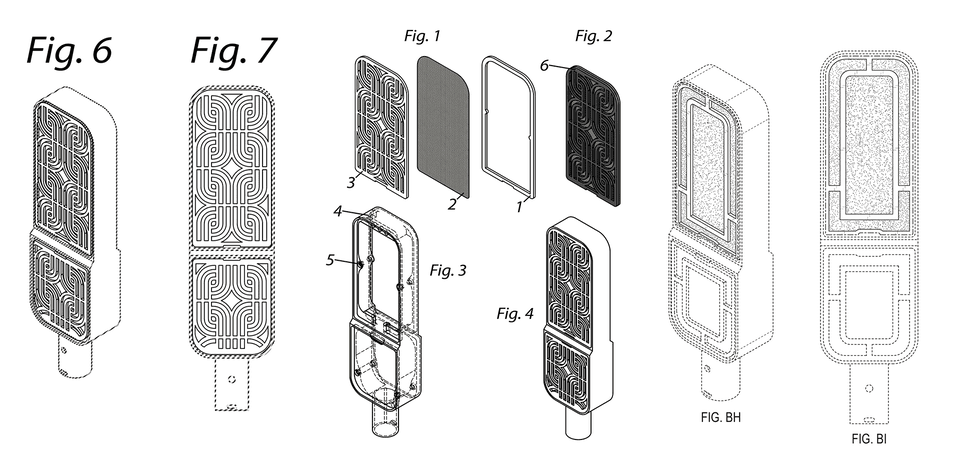
We have a patent! The Story Behind Our Mic Design and Swappable Screens
|
|
Time to read 3 min
|
|
Time to read 3 min
Hi, Sammy here!
Ohma World has officially been awarded not one, but two patents!
We’ve received a design patent for the distinctive look of our microphone and a utility patent for our swappable screen technology.
This moment feels surreal because it’s the realization of a dream I’ve had since I was a kid.
As a kid, I always dreamed of being an inventor. The moment that sparked this passion happened when my mom took me to the Museum of Modern Art (MoMA) in New York City. I remember walking through the exhibits, marveling at how ordinary objects like chairs, radios, and electric shavers were displayed as art. That’s when it hit me: anything could be art —paintings, music, video games, or even the tools we use to create other forms of art.
I knew then that I wanted to create something that combined function and artistry. Something that could one day sit in a museum and inspire others the way I was inspired.
When Char and I first started designing the Ohma mics, we knew we wanted to make something truly unique. We spent countless hours at our local makerspace taking classes in machining, laser cutting, and metalworking to learn how to bring our ideas to life.
Most microphones are crafted using CNC lathes, which are great for creating round objects. But our makerspace only had a CNC mill, which is better suited for rectangular shapes. That limitation shaped our design—literally.
We began designing a microphone from a rectangular piece of barstock. Using 3D modeling software (Fusion 360), I spent countless nights digitally “cutting down” the metal block, refining it over and over. We had to keep a lot of things in mind: the size of the ribbon transducer, the space needed for electronics, and how to make sure the design wouldn’t interfere with the sound.
Through trial and error, we came up with something we were proud of—something that didn’t look like any other mic out there.
Char and I have spent over a decade working in the audio industry, and one thing we both noticed was how much people care about the look of their tools.
We also noticed a fascinating trend: many older microphones used subtle changes in materials, like mesh density, to adjust their sound profiles. In fact, some modern users go as far as modding their mics to achieve different tones. This inspired us to rethink how microphone grilles—or, as we call them, screens —could impact both sound and aesthetics.
Char had a brilliant idea:
We got to work, cutting dozens of designs out of wood at the makerspace. We experimented with over 40 different patterns, testing how each one influenced the microphone’s acoustics on Char's vocals. Some sounded terrible, but five designs stood out for their unique and pleasant tonal characteristics.
At that point, we had a choice. We could take the five designs we loved and make them into separate mic models, like most companies would. Or we could try something different.
We thought back to when we were younger, just starting out in audio engineering. Back then, we couldn’t afford a bunch of fancy microphones. Owning even one decent mic felt like a big deal.
That’s when we had the idea:
“What if we made the screens swappable so artists could change the sound and look of their mic on a whim? One screen for guitars, another for vocals, and a super open one for drum overheads.”
This idea became the heart of our innovation. By making the screens swappable, we gave artists the power to customize not only the sound but also the look of their microphone.
Fast forward to today, and we’ve been granted patents for both the look of our mic and the swappable screen system. For us, these patents are more than just legal documents—they’re a validation of the work, creativity, and determination it took to create something truly unique.
We’re proud that Ohma mics don’t just sound incredible—they look and perform differently than anything else out there.
If I’m being honest, there’s a part of me that hopes one day an Ohma mic ends up in MoMA. I’d love for it to inspire someone the way those exhibits inspired me as a kid.
But for now, we’re just excited to put our mics in the hands of artists who will use them to create their own art.
Our mission has always been to make high-quality tools that empower artists to express themselves, and these patents are a testament to that vision.
Thank you for being part of this journey with us. Whether you’re a longtime supporter or just discovering Ohma, we’re excited to keep innovating and creating for you.
Here’s to art, invention, and making tools that inspire.
More Ohma










